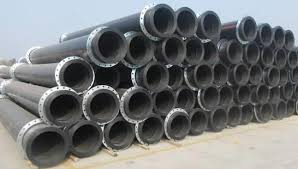Oct . 09, 2024 08:26 Back to list
15mm ppr pipe factory
Understanding the Production of 15mm PPR Pipes A Comprehensive Overview
The demand for efficient and durable piping solutions has led to the widespread use of Polypropylene Random Copolymer (PPR) pipes in various applications, from residential plumbing to industrial projects. One of the most common sizes for these pipes is 15mm, a versatile dimension that serves numerous purposes. This article aims to provide insights into the manufacturing process of 15mm PPR pipes, their advantages, and their applications.
Manufacturing Process of 15mm PPR Pipes
The production of 15mm PPR pipes involves several key steps, starting from the selection of raw materials to the final inspection of the finished products.
1. Raw Material Selection The primary material used in manufacturing PPR pipes is Polypropylene Random Copolymer. This thermoplastic polymer is chosen for its excellent properties such as resistance to temperature variations, low thermal conductivity, and resistance to chemical corrosion. High-quality raw materials ensure the longevity and durability of the pipes produced.
2. Melting and Extrusion The selected polypropylene is fed into an extruder, where it is subjected to high temperatures. This melting process transforms the solid pellets into a viscous liquid. Once melted, the material is then forced through a die that shapes it into a pipe form. The die for 15mm pipes is specifically designed to ensure a consistent internal diameter that meets the required standards.
3. Cooling After extrusion, the newly formed pipes pass through a cooling bath. This stage is vital as it solidifies the pipe structure, giving it strength and rigidity. Water or air cooling systems are often used to efficiently reduce the temperature of the pipes.
4. Cutting and Length Adjustment Once cooled, the pipes are cut into specified lengths. For 15mm PPR pipes, standard lengths may vary depending on market needs. Precision in this stage is crucial to ensure that each piece meets the required specifications for further use.
5. Quality Control Quality control is an integral part of the manufacturing process. Each batch of pipes undergoes rigorous testing to ensure they meet the industry standards and specifications. Tests may include pressure tests, visual inspections, and measurements of physical dimensions to ensure that the pipes are free from defects.
6. Packaging and Distribution After passing quality checks, the 15mm PPR pipes are packaged for distribution. Proper packaging is essential for protecting the pipes during transportation and storage, ensuring they reach customers in perfect condition.
15mm ppr pipe factory

Advantages of 15mm PPR Pipes
15mm PPR pipes come with numerous advantages that make them a preferred choice for many applications
- Durability PPR pipes are known for their long lifespan, often exceeding 50 years under proper conditions. They are resistant to corrosion, which is a common issue with metal pipes.
- Temperature Resistance These pipes can handle high temperatures, making them suitable for hot water supply systems. They can typically withstand temperatures up to 95°C.
- Low Maintenance Unlike traditional piping materials, PPR pipes require minimal maintenance over their lifespan, translating into cost savings for users.
- Lightweight PPR pipes are much lighter than metal alternatives, making them easier to handle and install, which can significantly reduce labor costs.
Applications of 15mm PPR Pipes
Given their beneficial properties, 15mm PPR pipes are widely used in various sectors, including
- Residential Plumbing These pipes are commonly used for both hot and cold water distribution in homes. - Heating Systems Their durability and temperature resistance make them ideal for heating applications, including underfloor heating systems. - Industrial Use Many industries utilize PPR pipes for transporting liquids, chemicals, and gases due to their resistance to chemical corrosion.
In conclusion, the 15mm PPR pipe is a product of advanced manufacturing techniques and high-quality materials, offering excellent performance in a variety of applications. As demand continues to grow for reliable and efficient piping solutions, PPR pipes are set to remain a staple in both residential and industrial environments.
-
High-Quality PVC Borehole Pipes Durable & Versatile Pipe Solutions
NewsJul.08,2025
-
High-Quality PVC Perforated Pipes for Efficient Drainage Leading Manufacturers & Factories
NewsJul.08,2025
-
High-Quality PVC Borehole Pipes Durable Pipe Solutions by Leading Manufacturer
NewsJul.08,2025
-
High-Quality PVC Borehole Pipes Reliable PVC Pipe Manufacturer Solutions
NewsJul.07,2025
-
High-Quality UPVC Drain Pipes Durable HDPE & Drain Pipe Solutions
NewsJul.07,2025
-
High-Quality Conduit Pipes & HDPE Conduit Fittings Manufacturer Reliable Factory Supply
NewsJul.06,2025

